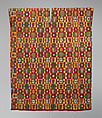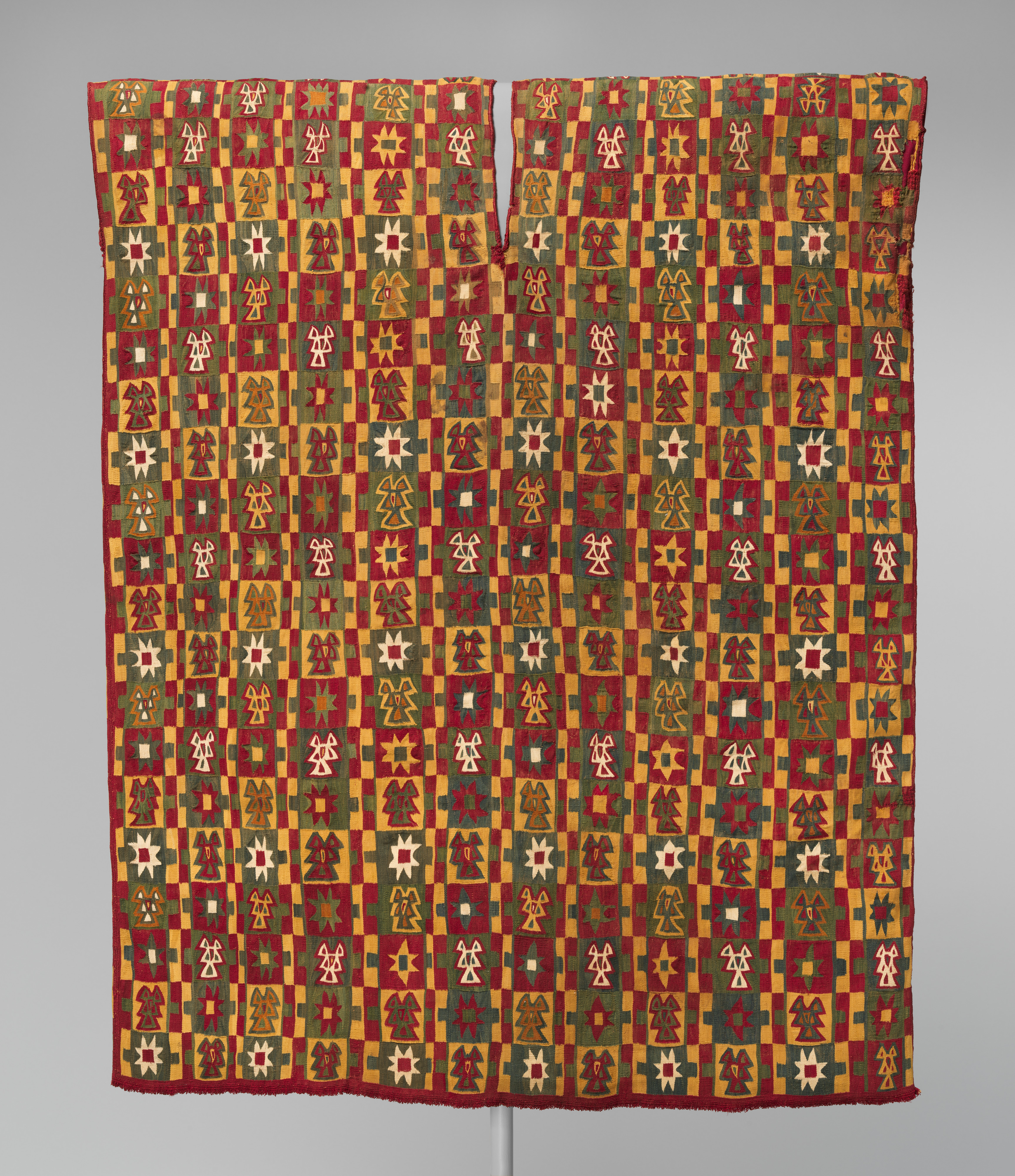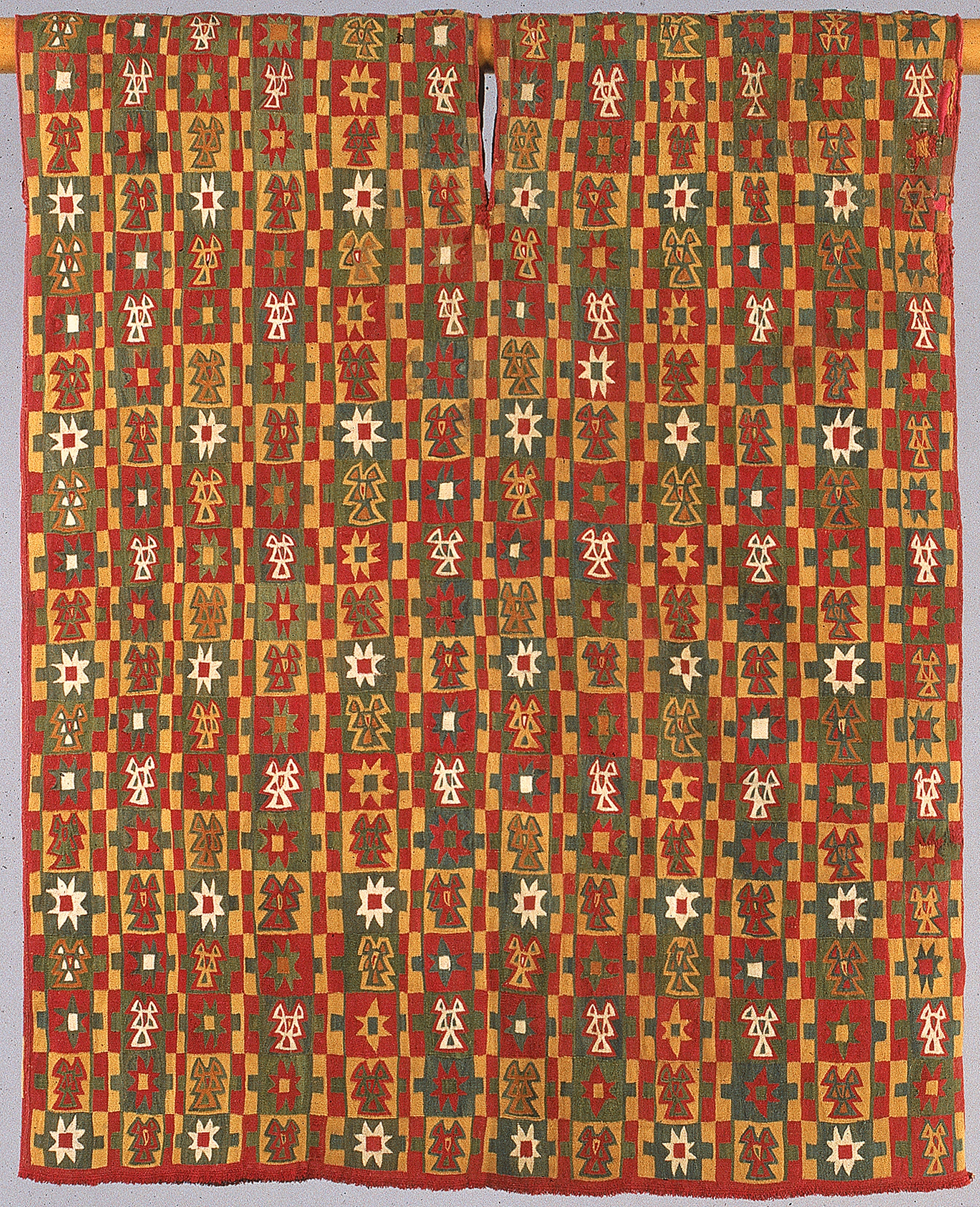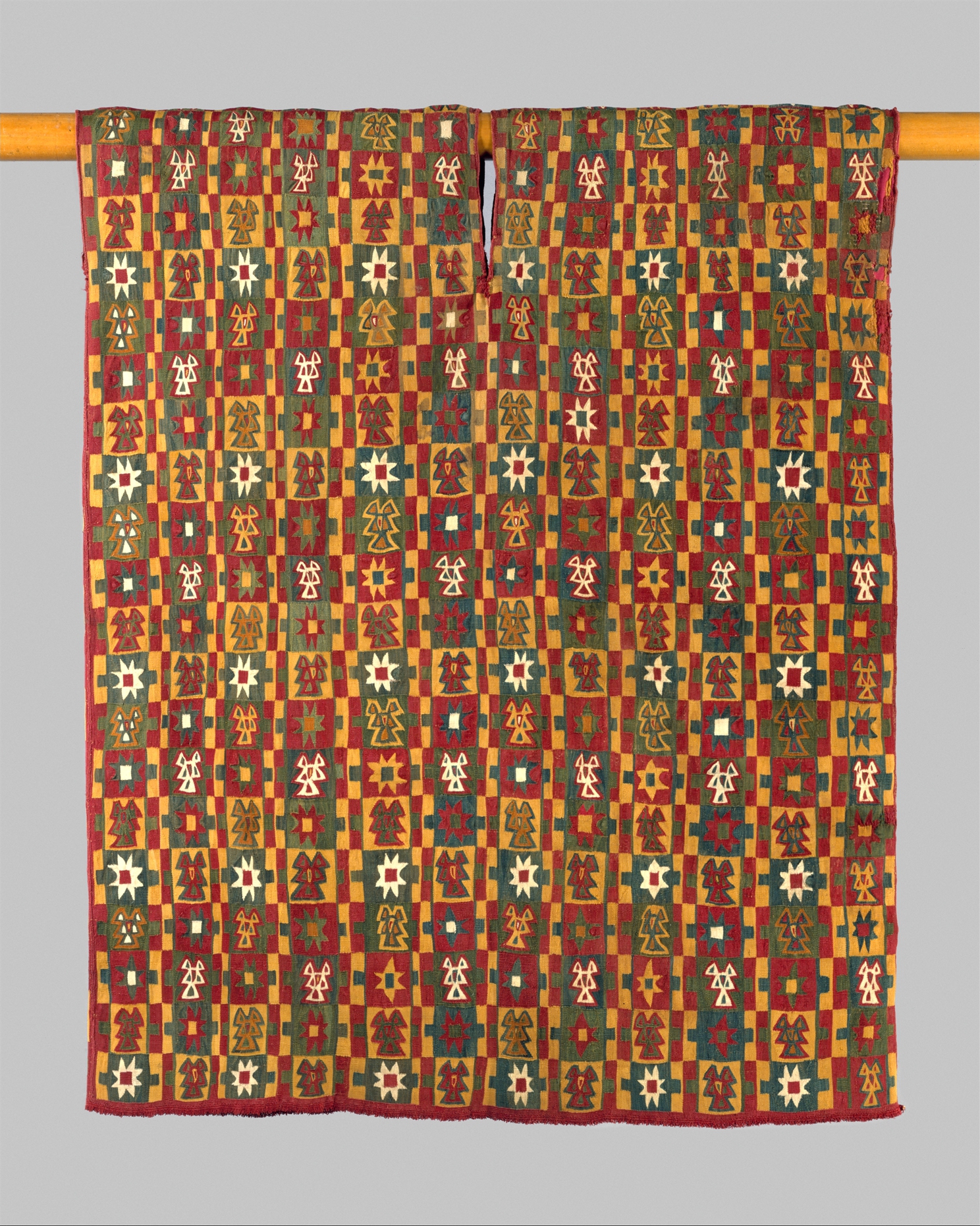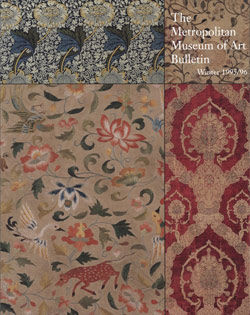Tunic
This tunic was woven by artists of the Chuquibamba culture, who lived on the southern coast and inland valleys of Peru. Textiles of this type were previously thought to have been created by Inca weavers; recent scholarship, however, has revealed that Chuquibamba was a distinct culture that preceded the rise the Inca Empire. After this region was incorporated into the Inca empire, Chuquibamba weavers retained many of their own stylist traditions that can be distinguished from classic Inca styles. For example, in a typical Inca tunic, eight-pointed stars are a solid color rather than having an interior square of a different color, as in this example. Yet elements of Inca imperial design were adopted by Chuquibamba weavers, such as the general proportion of tunics.
Inca tunics, called unku in the Quechua language of the Andes, are usually longer than they are wide. They were made from a single piece of cloth, the loom length being the width of the shirt--that is, they were woven sideways, with the warp in the short direction, and then folded over. The sides were sewn together, leaving holes for the arms at the top. The slot for the neck was woven with discontinuous warps. Fine tapestry tunics like the present example were items of great prestige and value. Their ownership and use were strictly controlled by the state. They were commonly bestowed as royal gifts by the emperor to reward military achievements or political service or to create bonds of loyalty.
Chuquibamba and Inca tunics both convey a strong sense of order and standardization, evident in this tunic’s rigorous layout and limited range of motifs. Chuquibamba weavers favored checkerboard-type grid patterning, often with eight-pointed star motifs alternating with stylized fish or birds.
References and Further Reading
Correa-Lau, Jacqueline, Carolina Agüero, Jeffrey Splitstoser, Ester Echenique, Tracy Martens, Calogero M. Santoro, " Inka Unku: Imperial or provincial? State-local relations. " PLoS ONE 18(2): e0280511. (2023).
Dransart, Penelope. "A Highland Tradition from the Far South of Peru During the Period of Inka Domination." In PreColumbian Textile Conference VIII/ Jomadas de Textiles PreColombino VIII, edited by Lena Bjerregaard and Ann Peters, pp. 137-156. Lincoln, NE: Zee Books, 2020.
Frame, Mary. "Chuquibamba: A Highland Textile Style." The Textile Museum Journal: 37-36 (1997-1998), pp. 3-48.
The Metropolitan Museum of Art. "Textiles in The Metropolitan Museum of Art." The Metropolitan Museum of Art Bulletin vol. 53, no. 3 (Winter 1995–1996), pp. 68–69.
Pillsbury, Joanne. "Inka Unku: Strategy and Design in Colonial Peru." Cleveland Studies in the History of Art 7 (2002):68-103.
Pillsbury, Joanne. "El uncu Inca: Tradición y transformación," in Arte imperial Inca: Sus orígenes y transformaciones desde la conquista a la independencia (edited by Ramón Mujica), pp. 274-311. Lima: Banco de Crédito, 2020.
Rowe, Ann Pollard. "Technical Features of Inca Tapestry Tunics," Textile Museum Journal 17 (1978), pp. 5-28.
Rowe, Ann Pollard. "Provincial Inca Tunics of the South Coast of Peru," Textile Museum Journal 31 (1992), pp. 5-52.
Rowe, Anne Pollard, and John Howland Rowe. "Inca Tunics." In Andean Art at Dumbarton Oaks Vol. 2, edited by Elizabeth Hill Boone, pp. 453-465. Washington, DC: Dumbarton Oaks Research Library and Collection, 1996.
Rowe, John Howland. "Standardization in Inca Tapestry Tunics." In The Junius B. Bird Pre-Columbian Textile Conference, May 19th and 20th, 1973, edited by Ann Pollard Rowe, Elizabeth P. Benson, and Anne-Louise Schaffer, pp. 239-264. Washington, D.C.: The Textile Museum, 1979.
Tessier, Chloé. "Les Conflits d’Interprétation de l’Iconographie des Textiles Préhispaniques de Chuquibamba, Pérou." In Controveres et Différends Textuels, Actes du Colloque Sens & Representation en Conflit, edited by Karsten Forbig and Chloé Tessier, pp. 217-229. Brussels, Belgium: Peter Lang, 2012.
Due to rights restrictions, this image cannot be enlarged, viewed at full screen, or downloaded.
This artwork is meant to be viewed from right to left. Scroll left to view more.
